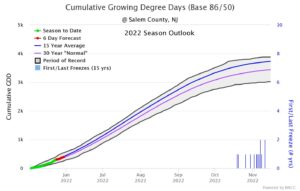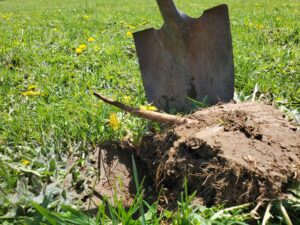It’s not to late to plant a garden in a few square feet of lawn…
According to the April 2022 report, the prices urban consumers paid for food in the grocery store is the highest it has been since November of 1980. To read the full report visit https://www.bls.gov/opub/ted/2022/food-prices-up-10-8-percent-for-year-ended-april-2022-largest-12-month-increase-since-november-1980.htm
The next release of data for the month of May 2022 CPI data is scheduled to be released on June 10, 2022, at 8:30 A.M. Eastern Time. If grocery store canned good prices are any indication, the May report will be higher.
Besides joining one of the many CSA’s in New Jersey, (https://ediblejersey.ediblecommunities.com/shop/csa-guide-jersey)
What can you still plant in the yard (sod removed, compost, lime, fertilizer in place) turned square foot garden hot spot in the month of June?
- First, if you have not already done so, and this is a new garden spot, get a soil test and include a lead test. Contact your local extension office for soil testing kits from laboratories in the region. When paying for the soil test results, be sure to request on the form a fertilizer recommendation by the linear foot (garden) as opposed to by the acre (as is done for commercial vegetable crops).
- Next, stock your own pantry with the following crops if you can: A) water them when needed and B) weed them when needed.
Be mindful of the bees. Plant insect-pollinated crops well away from backyard picnic areas and swimming pools.
- Corn: Self-pollinated, plant at least seven inches but no more than nine inches apart in multiple rows (not one long row)
- Sunflowers: Insect-pollinated, primarily bees, plant with corn, account for the width of the sunflower head in seed placement
- Beans: Self-pollinated, plant with a pea or bean-variety-specific mycorrhizal inoculant, provide stakes for pole beans
- Tomatoes: Wind pollinated, plant in a open area block for proper pollination and air flow
- Peppers: Self-pollinated, be mindful peppers drop flowers in high heat
- Cucumbers: Insect pollinated, plant in a area with the highest sun exposure
- Yellow squash: Insect pollinated, primarily bees
- Winter squash: Insect pollinated, primarily bees
- Pumpkin: Insect pollinated, primarily bees
- Melons: Insect pollinated, primarily bees
For a full list of crops and other information see the Rutgers Publication Planning a Vegetable Garden
For further reading on the cost of canned goods over time see, Canned Fruit and Vegetable Consumption in the United States. United States Department of Agriculture An Updated Report to Congress October 2010.


